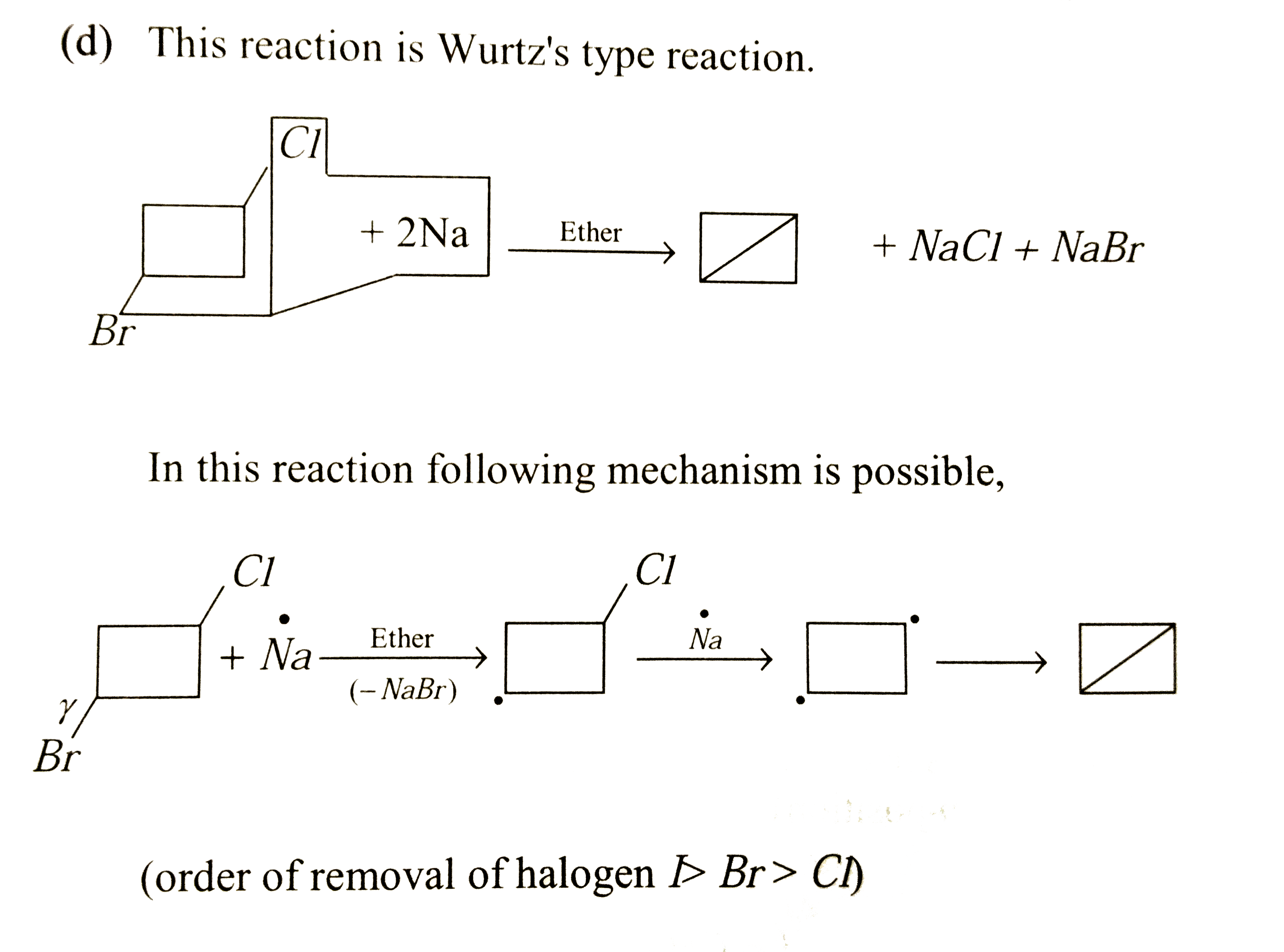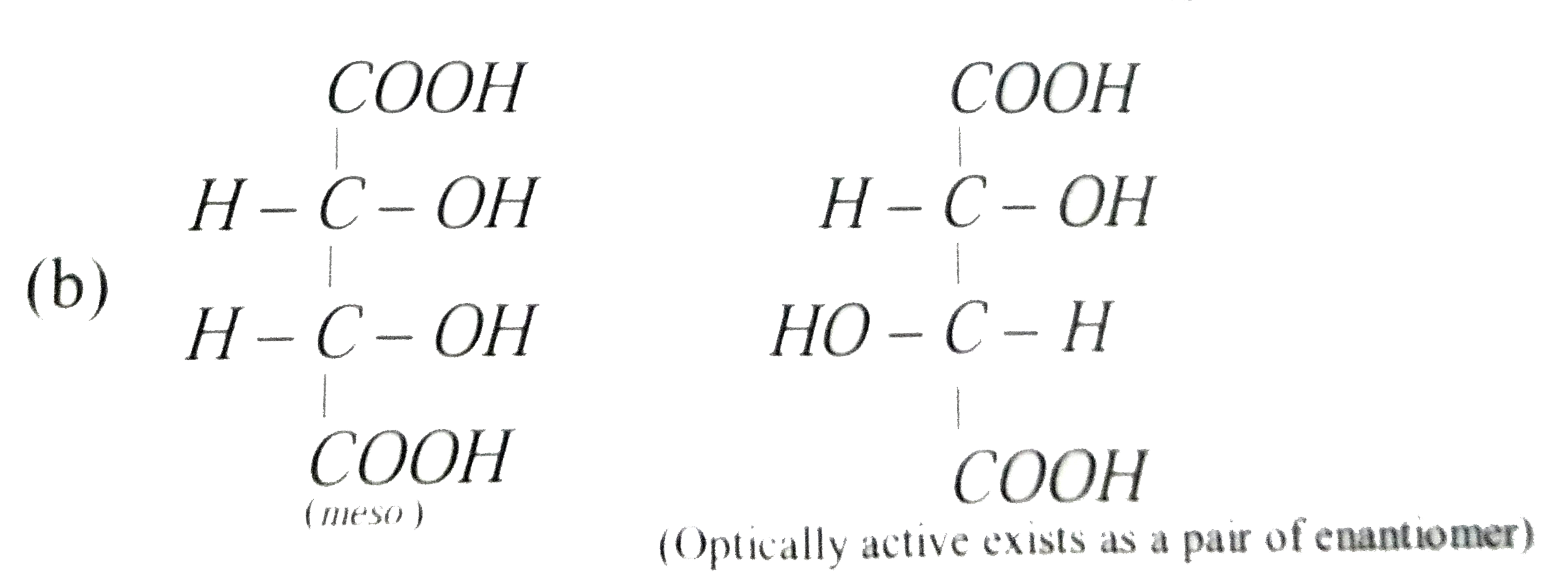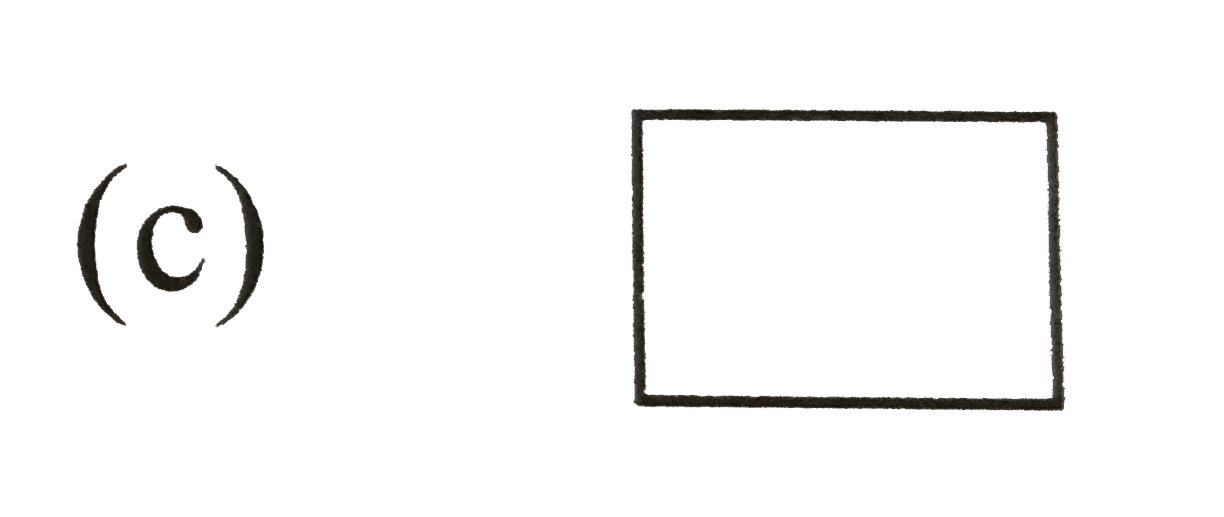Explore topic-wise InterviewSolutions in .
This section includes InterviewSolutions, each offering curated multiple-choice questions to sharpen your knowledge and support exam preparation. Choose a topic below to get started.
| 13001. |
Toluene can be converted to benzaldehyde by |
|
Answer» `CrO_(2)Cl_(2)//CS_(2)` |
|
| 13002. |
Write two uses of ammonia. |
|
Answer» Solution :AMMONIA is used as a refrigerant It is used in the MANUFACTURE of NITRIC ACID in Ostwald.s process. |
|
| 13003. |
underset("Brown")([(NH_(3))_(5)Co-O-O-Co(NH_(3))_(5)]^(4+)) underset("oxidise")overset([S_(2)O_(8)]^(2-))tounderset("Green")([(NH_(3))_(5)Co-O-O-Co(NH_(3))_(5)]^(+5)) The magnetic moment of green complex is 1.7 BM & for brown complexes magnetic moment is zero. (O-O) is same in all respect in both the complexes. The O.S. of Co in brown complex & green complex respectively are- |
|
Answer» `{:(III ""III"&"IV""III),("BROWN""green"):}` |
|
| 13004. |
Write the overall rendox reaction which takes place in the galvanic cell, Pt(s)abs(Fe^(2+)(aq), Fe^(3+)(aq))abs(MnO_(4)^(-)(aq), H^(+)(aq),Mn^(2+)(aq))Pt(s) |
|
Answer» Solution :Oxidation at anode `Fe^(2+) rarr Fe^(3+)+e^(-) "...(1)"` REDUCTION at cathode `MnO_(4)^(-)+8H^(+)+5e^(-) rarr Mn^(2+)+4H_(2)O"...(2)"` To balance multiply equation `(1) TIMES 5` and equation `(2) times 1` `5Fe^(2+)+MnO_(4)^(-)+8H^(+) rarr Mn^(2+)4H_(2)O+5Fe^(3+)` Overall REDOX reaction is `5Fe^(2+)""_((aq))+MnO_(4(aq))^(-)+8H_((aq))^(+) rarr 5Fe^(3+)""_((aq))+Mn^(2+)""_((aq))+4H_(2)O(l)` |
|
| 13005. |
What is the major product of the following reaction ? CH_(3)CH_(2)- overset(O)overset("||")C-H+CH_(3)MgBr overset(H_(2)O //H^(+))rarr |
|
Answer» 1-Butanol |
|
| 13006. |
The volume of (N)/(10)NaOH require to neutralise 100 ml of (N)/(25) HCl is |
|
Answer» 30 ml Milli EQUIVALENT of base=milli equivalent of acid `N_(1)V_(1)=N_(2)V_(2) implies(1)/(10) xxV_(1)=(1)/(25)xx100,V_(1)=40ml` |
|
| 13007. |
What is mole fraction ? Explain in brief. |
|
Answer» Solution :Definition : The ration between mole of one component of solution and TOTAL MOLES of solution is known as mole fraction of component. Commonly used symbol for mole fraction is x and subscript used on the right hand side of x denotes the component. Mole fraction of a component `= ("Number of moles of the component")/("Total number of moles of all the components")` For example, in a binary MIXTURE, if the number of moles of A and B are `n_(A)` and `n_(B)` respectively, the mole fraction of A will be `x_(A)=(n_(A))/(n_(A)=n_(B))` For a solution containing .i. number of components,we have : `x_(i)=(n_(i))/(n_(1)+n_(2))+.....+n_(i)=(n_(i))/(Sigma n_(i))` It can be shown that in a given solution sum of all the mole fractions is unity, i.e., `x_(1)+x_(2)+ ............. +x_(i)=1` Mole fraction unit is very useful in relating some PHYSICAL properties of solutions, say vapour pressure with the concentration of the solution and quite useful in describing the calculations INVOLVING gas mixtures. |
|
| 13008. |
Which of the followingreduction is notthermodynamically feasible ? |
|
Answer» `Cr_(2)O_(3) + 2AL toAl_(2)O_(3) + 2Cr` |
|
| 13009. |
Which of the following is the strongest Lewis acid |
|
Answer» `BI_(3)` |
|
| 13010. |
When a steady current of 2A was passed through two electrolytic cells A and B containing electrolytes ZnSO_4 and CuSO_4 connected in series, 2g of cu were deposited at the cathode of cell B. How long did the current flow? What mass of Zn was deposited at cathode of cell A? |
|
Answer» Solution :Suppose the current flowed for t seconds Total charge =`2A times ts =2t` coulomb Thus, 2 FARADAY or `2 times 96500` coulombs charge is required to deposit 1 mole of copper `2 times 96500` coulombs deposit =63.5g of copper 2t coulombs deposit= `63.5/(2 times 96500) times 2t=(63.5t)/96500 G` Also `(63.5t)/96500 g=2g` or `t=(2 times 96500)/63.5=3039 seconds` Mass of Zn deposited According to Faraday.s second law `(Mass of zi nc)/(Eq. weight of Zn)=(Mass of copper)/(Eq. weight of copper)` or `(Mass of zi nc)/(65//2)=2/(63.5//2)` or Mass of zinc =`(2 times 65)/63.5=2.047g` |
|
| 13011. |
What will be the EMF of the following electrode concentration cel at 25^(@)C Hg-Zn(C_(1)M)|Zn^(2+)(CM)|Hg-Zn(C_(2)M) If the concentrations of zinc amalgam are 2 g per 100 g of mercury and 1 g per 100 g of mercury in the aniodic and the cathodic compartments respectively. |
|
Answer» SOLUTION :The half-cell reaction are At anode: `Zn(C_(1))TOZN^(2+)(C)+2E^(-)` `underset("At anode:"Zn^(2+)(C)+2e^(-)toZn(C_(2)))` net reaction: `Zn(C_(1))toZn(C_(2))` Thus, it is a CONCENTRATION cell for which `E_(cell)=(0.0591)/(2)"log"(C_(1))/(C_(2))=(0.0591)/(2)"log"(2)/(1)=(0.0591)/(2)xx0.3010=8.89xx10^(-3)V` |
|
| 13012. |
Which would be the product formed when 1-bromo-3-chloro cyclobutane reacts with two equivalents of metallic sodium in ether |
|
Answer»

|
|
| 13013. |
When electriccurrentis passedthroughacidifiedwaterfor 1930s 1120 mL of H_(2)gas is collected(at sTP) at the cathode what is the curent passed in amperes |
|
Answer» 0.05 `H_(2)O rarr H^(+) + OH^(-)` Giventime t = 1930 S Numberof moles of hydrogen collected `=(1120xx10^(-3))/(22.4)` MOL = 0.05 mol `because`1 moleof hydrogenis deposited 2 MOLESOF electron `therefore`0.05 molesof hydrogen willl be deposited ` = 2 xx0.05 = 0.10`moleof electrons chargeQ= nF = `0.1 xx965000` Charge Q = it `0.1 xx96500 =i xx1930` `i=(0.1 xx96500)/(1930)=5.0 A` |
|
| 13014. |
Which one of the following compounds undergoes bromination on its aromatic ring (electrophilic aromatic substitution) at the fastest rate? |
|
Answer»
|
|
| 13015. |
Which mechanism is followed in the synthesis of polystrene? |
|
Answer» FREE RADICAL POLYMERISATION |
|
| 13016. |
Which is not a colloid? |
|
Answer» CHLOROPHYLL |
|
| 13017. |
Which is the most abundant carbohydrate in a plant kingdom ? |
|
Answer» GLYCOGEN |
|
| 13018. |
What volume of acetylene at NTP will be produced from 100 g of CaC_2 when reacts with excess of water ? |
|
Answer» |
|
| 13019. |
Two beakers 1 and 2 containing 0.15 moles of napthalein (C_(10H_(8)) in 100gm of benzene and 31 gram of glucose in 100gm of benzene respectively , areplaced under a tightly sealed bell-jar at 298K . Calculate the weight fraction of naphthalein at equilibrium by assuming ideal behaviour |
|
Answer» `0.70` |
|
| 13020. |
Y overset(Delta, 205^@ C) larr Ca SO_4. 2H_2 O overset(Delta, 120^@ C) larr X. X and Y are respectively - |
|
Answer» PLASTER of PARIS, DEAD BURNT plaster |
|
| 13021. |
Thestrutures of carbocation and carbanion are respectively- |
|
Answer» LINEAR and PLANAR |
|
| 13022. |
Which is most reactive towards electrophilic reagent? |
|
Answer»
|
|
| 13023. |
Which among the following can act as reducing agent (A)SnCl_(2), (B)CO and (C)PbCl_(2)? |
|
Answer» (A) and (B) |
|
| 13024. |
Which one of the following ligand is capable of forming a low spin as well as a high spin complex ? |
|
Answer» CO |
|
| 13025. |
Which of the following has the highest pK_(b) value? |
|
Answer»
|
|
| 13026. |
Using the standard electrode potentials, predict if the reaction between the following is feasible : (a) Fe^(3+) (aq) and I^(-)(aq), (b) Ag^(+) (aq) and Cu(s) (iii) Fe^(3+) (aq) and Br^(-) (aq), (d) Ag (s) and Fe^(3+) (aq) ( c) Br_(2)(aq) and Fe^(2+) (aq). Given standard electrode potentials: E_(1//2, I_(2))^(@) =0.541 V, E_(Cu^(2+),Cu)^(@) = 0.34 V E_(1//2,Br_(2),Br^(-))^(@) = 1.09 V, E_(Ag^(+)//Ag)^(@)= 0.80 V E_(Fe^(3+),Fe^(2+))^(@) = 0.77 V |
|
Answer» SOLUTION :A REACTION FEASIBLE if emf of the cell constituted is +ve (a) `Fe^(3+)(aq) + I^(-)(aq) to Fe^(2+)(aq) +1/2 I_(2), i.E, Pt | It | I^(-) (aq) || Fe^(3+) (aq) | Fe^(2+) (aq) | Pt` `therefore E_("cell")^(@) = (E_(Fe)^(3+), Fe^(2+)) - (E_(1//2I_(2),I^(-))^(@)) = 0.77 - 0.54 = 0.23 V` (feasible) (b) `Ag^(+)(aq) + Cu to Ag(s) + Cu^(2+)(aq)`, i.e. `Cu | Cu^(2+)(aq) || Ag^(+) (aq) | Ag` `E_("cell")^(@) = 0.77 - 1.09 = -0.32 V` (not feasible) (d) `Ag(s) + Fe^(3+) (aq) to Ag^(+) + Fe^(2+)` (aq) `E_("cell")^(@) = 0.77 - 0.80 =-0.03 V` (not feasible) ( e) `1/2Br_(2)(aq) + Fe^(2+) (aq) to Br^(-) + Fe^(3+)`, `E_("cell")^(@) = 1.09 - 0.77 = 0.32 V` (feasible) |
|
| 13027. |
When a catalyst increases the rate of a chemical reaction, the rate constant: |
|
Answer» Increases |
|
| 13028. |
To measure the quantity of MnCl_(2) dissolved in an aqueous solution, it was completely converted to KMnO_(4) using the reaction, MnCl_(2)+K_(2)S_(2)O_(8)+H_(2)Orarr KMnO_(4)+underset("(equation not balanced)")(H_(2)SO_(4)+HCl) Few drops of concetrated HCl were added to this solution and gently warmed. Further, oxalix acid (225 g) was added in portions till the colour of the permanganate on disappeared. The quantity of MnCl_(2) (in mg) present in the intial solution is _____ (Atomic weights in "g mol"^(-1):Mn=55, Cl=35.5) |
|
Answer» `C_(2)O_(4)^(-)+MnO_(4)^(-)OVERSET(H^(+))rarrCO_(2)` `m_(eq)" of "C_(2)O_(4)^(-)=m_(eq)" of "MnO_(4)^(-)` `2xx0.225//90=axx5` `a=1xx[55+71]` `=126mg` |
|
| 13029. |
Total number of configurational isomers of tartaric acid is |
|
Answer» 2  . .
|
|
| 13030. |
Which one amongthe following pairs of ions cannot be separated by H_2S in diluteHCl ? |
|
Answer» `Al^(3+), Cu^(2+)` |
|
| 13031. |
The work required to raise a mass of 0.5 kg through a height of 1 m is |
|
Answer» 4.9 J |
|
| 13032. |
Which one of the following solution has highest equivalent conductance? |
|
Answer» 0.1 M NaCl |
|
| 13033. |
Which of the following will be most stable diazonium salt RN_2^(+)X^(-)? |
|
Answer» `CH_(3)CH_(2)N_(2)^(+)X^(-)` |
|
| 13034. |
Which of the following represents the correct state of existence of sulphanilic acid ? |
|
Answer»
|
|
| 13035. |
The standard reduction potential of the electrode Cl^(-) L CuCl is E^@ = 0.137volt. Calculate K_(sp)of CuCl at 298 K. (E_(Cu^(+), cu)^@ = 0.521 "volt") . |
| Answer» SOLUTION :`3.19 xx 10^(-7) ("mol"//L)^2` | |
| 13036. |
Which of the following statementsis not correct ? |
|
Answer» Some antisepticscan be added to SOAPS . |
|
| 13037. |
Whatis the structural featurecharacterising reducing sugar ? |
| Answer» SOLUTION :Carbohyrates which can reduce Tollen.s reagentsor Fehlingsolution are classified as reducingsugar . STRUCTURAL featureis that the redcuingsugars CONTAINS a FREE aldehydic or ketonicgroup . | |
| 13038. |
What is the use of Salol ? |
|
Answer» ANTISEPTIC |
|
| 13039. |
Why boiling point of water is increased on addition of sodium chloride into it ? |
| Answer» SOLUTION :When NaCl (or any other non-volatile solute) is dissolved in water, vapour pressure of water DECREASES (because some of the solvent molecules on the SURFACE and replaced by the molecules of the solute which are non-volatile). The solution has to be heated more to make vapour pressure equal to the external pressure. Hence, BOILING point is increased. | |
| 13040. |
Write the reactions of alcohols with hydrogen halides |
|
Answer» Solution :`to` With hydrogen halides, the alcohols react to form alkyl halides. The difference in the reactivities of three classes of alcohols with HCl distinguishes from ONE another. `to` The alcohol reacts with Lucas REAGENT (conc. HCI and `ZnCl_(2)`) while their halides are immiscible and produce turbidity in solution. In case of tertiary alcohols, the turbidity is produced immediately as they form halides easily. Primary alcohols do not produce turbidity at room temperature. `to` The reaction of tertiary alcohols take PLACE by `S_(N)l` mechanism whereas primary and secondary alcohols reacts by `S_(N)2` mechanism. `(CH_(3))_(3)C-OH overset(ZnCl_(2)//HCl) to (CH_(3))_(3)C- Cl+ H_(2)O` |
|
| 13041. |
Which of the following is insoluble in dil. HNO_2 but soluble in aqua regia? |
|
Answer» HGS `3HgS +2HNO_(3) + 6HClto 3HgCl_(2)+2NO+4H_(2)O+5S` |
|
| 13042. |
The structure of iron pentacarbonyl is: |
|
Answer» SQUARE PLANAR |
|
| 13043. |
Which complex is obtained on reaction of Ag with NaCN ? |
|
Answer» `[AG(CN)_(2)]^(2-)` |
|
| 13044. |
The root mean square speed of gas molecules |
|
Answer» INCREASES with molar MASS |
|
| 13045. |
Which of the following pair of protein is globular protein ? P-kertain, Q-Insulin, R-myosin, S-albumin |
|
Answer» <P>P, R |
|
| 13046. |
Which interhalogen compound is identified by spectroscopic method ? |
|
Answer» ICL |
|
| 13047. |
Which element in the first transition series shows the maximum number of oxidation states ? |
| Answer» SOLUTION :MANGANESE | |
| 13048. |
What is the unit for rate constant for pseudo first order reaction ? |
|
Answer» L `MOL^(-1)sec^(-1)` |
|
| 13049. |
What happen when: (a) Green Vitriol is strongly heated. , (b) FeSO_(4) reacts with potassium ferricyanide. (c ) Fe_(2)O_(3) is fused with soda ash. , (d) Salts of iron (III) reacts with NH_(4)SCN. (e ) Zinc oxide and cobalt oxide is fused. ,(f) Malachite is made to react with dilute H_(2)SO_(4) (g) copper sulphate is exposed to air for longer period Lunar caustic is made to react with sodium hydroxide and then product is dried. (i) Silver nitrate reacts with excess iodine. Potassium dichromate reacts with cold and concentrated H_(2)SO_(4) |
|
Answer» |
|
| 13050. |
Which has the highest f.p. at 1 atm ? |
|
Answer» `0.1` M NaCl solution |
|


















